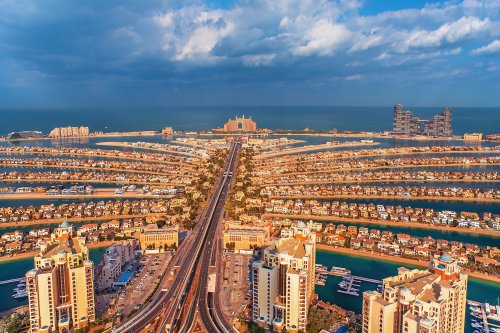7 Off-the-Beaten-Path Cultural Heritage Destinations That Challenge Travel Stereotypes
Portugal's lesser-known corners often hold the most intriguing glimpses into its past. Take, for instance, the medieval oven in Alcobertas, near Rio Maior. Dating back to the 1200s, this isn't some dusty museum piece, but a working vestige of community life. Unearthed somewhat by accident in the mid-20th century during preparations for industrial development, it turned out this structure was once central to village activities centuries ago. It wasn’t primarily for bread as one might expect, but rather a facility for baking essential pottery items like tiles and utensils. This oven, boxy in its design and of modest dimensions, speaks to the everyday skills and shared resources of the people of that era. Local enthusiasts took it upon themselves to care for the site decades after its discovery, ensuring its survival. Alcobertas itself isn’t on the typical tourist circuit, though reachable as an excursion from Lisbon. Beyond the oven, the area offers further exploration with caves and salt pans nearby, suggesting a deeper, more textured experience of Portugal than the usual coastal resorts. It's a reminder that true cultural heritage lies not just in grand monuments, but often in the unassuming remnants of daily life, waiting to be discovered in places overlooked by most travelers.
Nestled away in Alcobertas, Portugal, one finds a remarkable artifact of medieval ingenuity still very much in use: a village oven dating back to the 1200s. Unearthed somewhat incidentally during mid-20th century groundworks for a ceramic factory, this unassuming structure offers a direct link to centuries of culinary and communal practice. It’s quite something to consider that this quadrangular oven, likely serving originally for both bread and perhaps even pottery firing judging by local accounts, has stood for some eight centuries. Local efforts decades ago to clear and preserve the site seem to have paid off, allowing us now to observe a practical piece of medieval technology functioning much as it presumably always has. The thick walls and tiled, removable roof, are not just quaint historical details, but rather speak to a deep understanding of thermal properties and efficient heat retention. It's more than just baking bread here; it's a tangible connection to past ways of life. The surrounding village with its ancient lanes and stone buildings further emphasizes this continuity, creating a palpable sense of stepping back in time. The oven’s ongoing operation is a testament to the enduring appeal of slow, wood-fired cooking, something modern industrial approaches often overlook, and provides a fascinating case study for anyone interested in the history of technology and community. And for those exploring the region, the proximity to other archaeological points of interest only enriches the experience, blending culinary curiosity with broader historical exploration.
What else is in this post?
Moving eastward from Europe, consider the stark landscapes of Turkmenistan, a country not often topping typical travel lists. Here, amidst the Karakum Desert, lie the extensive ruins of Merv, once a pivotal metropolis on the Silk Road. This isn't just some forgotten outpost; Merv was for centuries a major urban center, a crossroads where East and West exchanged goods and ideas. Its history stretches back millennia, and at its zenith, it rivaled even the grand cities of Persia and Mesopotamia. What’s striking today is the sheer scale of the site. Scattered across a wide area are the remnants of fortresses, mausoleums, and city walls, testaments to the various empires – from the Achaemenids to the Timurids – that vied for control over this strategic location. UNESCO recognizes Merv for its universal historical importance, and ongoing archaeological excavations are still peeling back layers of the past. This isn't a manicured tourist attraction. Visiting Merv is an exercise in imagining a bygone era, of piecing together the grandeur from the sun-baked bricks and dust. It’s a place where the silence of the desert speaks volumes about the ebb and flow of civilizations, a stark contrast to the packaged historical narratives offered at more conventional destinations. For those willing to venture beyond the well-trodden tourist paths, Merv provides a compelling encounter with a less sanitized, more raw form of historical exploration.
Further south, along the Albanian coastline, another site offers a compelling look into layered history: Butrint. Designated a UNESCO site, the location reveals a fascinating palimpsest of civilizations, perhaps most strikingly through its Roman-era bath complex and earlier Greek theater. Examining the subterranean baths, one notes the robust construction, the remnants of underfloor heating systems – hypocausts as they are termed – demonstrating a sophisticated understanding of thermal engineering that pre-dates many contemporary assumptions about Roman technology. Nearby, the Greek amphitheater, carved into the hillside and dating back to the 3rd century BC, still hints at the societal importance of public performance and civic life in this ancient locale. What's particularly intriguing is the site’s continuous habitation for millennia, leaving behind traces of Illyrian origins overlaid by Greek, Roman, Byzantine, and even Venetian influence. The strategic positioning near the coast and freshwater sources underscores a pragmatic choice for settlement, and the remnants of aqueducts and drainage further point to advanced infrastructural planning. The mosaics within the bath ruins provide glimpses into artistic and cultural values, while ongoing excavations continue to unearth further layers of Butrint's complex past, including evidence of early Christian structures. It's a place where the ongoing dialogue between historical preservation and the inevitable forces of time remains palpable.
Further along the path of less-trodden cultural sites is Mada'in Saleh, also known as Al Hijr, in Saudi Arabia. This location marks the country's inaugural UNESCO World Heritage designation and is home to over 130 remarkable rock-cut tombs. These tombs are not simple excavations; they are adorned with elaborate carvings, showcasing the artistry of the Nabataean civilization that once thrived here. Located in the Al Ula region, about 20 km north of Al Ula town, Mada'in Saleh served as the second most significant city for the Nabataeans after Petra. Dating back some 2,500 years, the inscriptions and designs within the tombs offer crucial insights into the Nabataean language and script, considered an early form of Arabic. Beyond the archaeological significance, the area itself presents striking desert landscapes, including notable rock formations like Elephant Rock. While gaining recognition, Mada'in Saleh remains less frequented than Petra, providing a more intimate encounter with this ancient culture, appealing to those in search of authentic historical exploration beyond the typical tourist routes. This site not only represents a significant piece of Arabian Peninsula history but also stands as a testament to ancient engineering and artistic skill, inviting discovery without the modern tourist masses.
Uzbekistan's ancient city of Khiva emerges as a compelling stop along the storied Silk Road, largely due to its remarkably preserved inner city, Itchan Kala, now a UNESCO World Heritage site. The experience of walking along the old city walls as the sun sets is particularly evocative. The fading daylight accentuates the detailed tilework and the silhouettes of minarets, creating a scene that feels removed from the modern world. Wandering through Khiva's cobbled lanes reveals a history rich in both artistic achievement and less palatable aspects, a complexity often glossed over in more mainstream travel narratives. From the vantage point of the Kunha Ark citadel at dusk, one gains a sweeping perspective on Khiva's multifaceted past, making it a distinctive choice for those seeking more than just surface-level cultural encounters. This somewhat overlooked city is a chance to delve into a living history, one that resonates with the echoes of the Silk Road’s fascinating and complicated story.
Venturing further east, beyond the well-charted routes of Silk Road tourism, Uzbekistan presents Khiva, a city that feels deliberately removed from the present. Encased within formidable, sun-baked brick walls, Khiva’s inner city, Itchan Kala, demands exploration on foot, especially as dusk approaches. Circumnavigating these ramparts provides a revealing vantage point, not just of the urban layout, but also of the intricate play of light on the aged mud-brick structures. The setting sun casts long shadows from the minarets, underscoring the geometrical precision embedded in their design. This isn't mere aesthetic happenstance; the orientation and height of these towers, along with the city walls themselves, likely served strategic observational functions. To walk these walls is to consider the engineering challenges faced in constructing such fortifications in an arid climate, using locally sourced materials. Khiva’s role as a vital Silk Road entrepôt is palpable; the density of buildings within the walls speaks to its historical importance as a nexus of trade and cultural exchange. However, the city's narrative isn't solely one of commerce and cultural richness. Like many settlements along these ancient routes, Khiva's history is shadowed by less celebrated aspects, including its involvement in the slave trade, a stark counterpoint to the architectural grandeur. Exploring Khiva requires acknowledging this complex past, recognizing that the beauty and historical significance are intertwined with less palatable chapters. It's a destination that prompts reflection on the multifaceted nature of cultural heritage, where the allure of the past is inseparable from the scrutiny of its entire history.
Leaving behind landlocked ancient cities, we now explore Iran’s coastal edge, where Bandar Abbas operates as the country's main port and a living museum of maritime heritage. This bustling city evolved from humble fishing origins into a key trading hub, its location near the Strait of Hormuz making it critical for Iranian imports and exports. What stands out here is the ongoing tradition of dhow building. Forget static museum displays; in Bandar Abbas, you can witness the active construction of these wooden vessels, using age-old techniques passed down through generations. This isn’t just for show; it’s a real part of the local economy and identity, reflecting a deep-rooted connection to the sea. For those interested in genuine cultural experiences rather than packaged tours, Bandar Abbas provides a glimpse into a less-seen facet of Iran. While the port is a functional, working space, not a polished attraction, nearby Kish Island holds an annual Dhow Festival, a local event showcasing maritime skills and traditions. The surrounding area also offers surprises, like Hormuz Island, with its otherworldly landscapes, presenting a vision of Iran far removed from common, often reductive, stereotypes.
Moving further east and southward from inland routes brings one to the coast of Iran and Bandar Abbas, a port city where the pulse of maritime trade is still distinctly palpable. Positioned strategically on the Persian Gulf, this isn't some relic of a bygone era; it’s a contemporary hub where commerce and tradition intersect, sometimes uneasily. The harbor’s activity is driven by its location adjacent to the Strait of Hormuz—a critical artery for global oil shipments, though this aspect often overshadows other facets of the city’s identity. What’s immediately noticeable, and perhaps unexpected given the industrial scale of modern ports, is the persistence of dhow building. Wooden vessels, crafted using methods passed down through generations, are still actively constructed here. It's a practical craft serving local needs, but also a tangible link to the
Ayutthaya, the former capital of Thailand, stands as a testament to the country's rich history and cultural heritage. Once a thriving metropolis from the 14th century until its destruction in the 18th century, this UNESCO World Heritage Site is renowned for its impressive ruins that blend ancient architecture with active Buddhist practices. Visitors can explore the remnants of majestic temples and monasteries, which continue to function as places of worship, offering a unique insight into the spiritual and cultural life of the region. Beyond the ruins, Ayutthaya provides opportunities to engage with local traditions, creating a deeper connection to Thailand's diverse cultural landscape. This historical city challenges conventional travel narratives by showcasing both its grandeur and the enduring presence of local communities amidst its storied past.
Ancient capitals often carry whispers of past glories, and Ayutthaya in Thailand is no exception. Once the heart of Siam from the 14th to 18th centuries, this city, a short distance north of present-day Bangkok, presents a compelling counterpoint to Thailand’s more frequented tourist trails. Designated a UNESCO World Heritage site, Ayutthaya is more than just photogenic ruins; it’s a living landscape where history and contemporary life intersect, often in unexpected ways. The remnants of temples and palaces, dramatically impacted by an 18th-century Burmese invasion, still stand in testament to a sophisticated past. Among these weathered stones, numerous monasteries continue to function as active centers of Buddhist practice. It’s a peculiar juxtaposition – ancient brickwork echoing with centuries of history, while saffron-robed monks carry out daily rituals in the same spaces. This continuity of religious life within historical monuments offers a tangible connection to Thailand’s cultural depths, far removed from simplistic tourist tropes of beaches and bustling markets. Exploring Ayutthaya raises questions about the cyclical nature of civilizations - destruction and rebuilding, the endurance of faith, and how a place reinvents itself while holding onto its foundational identity.










